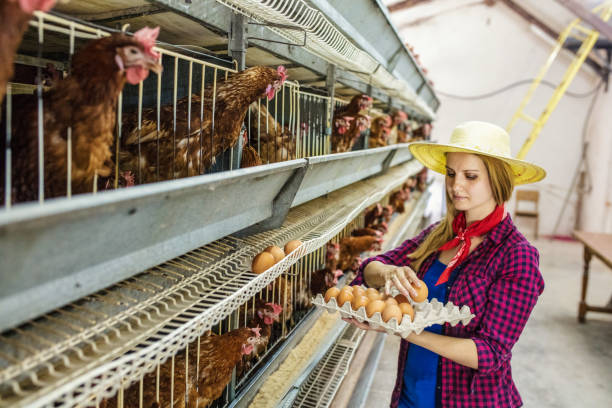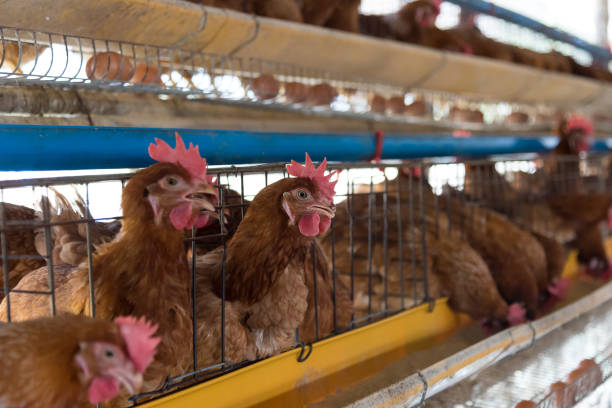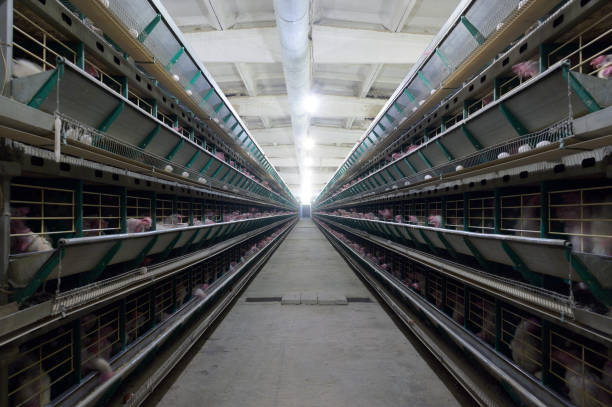
Brooder Cage Investment: Projecting Costs for Your Poultry Business Plan
Brooder Cage Investment: Projecting Costs for Your Poultry Business Plan
Starting a poultry business, especially one focused on egg production or broiler farming, requires careful planning and a realistic understanding of the costs involved. One of the most critical investments you’ll make is in brooder cages. These specialized environments provide the controlled conditions necessary for chicks to thrive during their most vulnerable early weeks. Accurately projecting the costs associated with brooder cages is essential for a sound business plan. This article will explore the factors influencing the cost of brooder cages and provide a framework for projecting these expenses in your poultry business plan.
Why Brooder Cages are Essential
Before diving into the costs, it’s important to understand why brooder cages are a crucial investment. Chicks are extremely susceptible to temperature fluctuations, drafts, and diseases in their early stages. Brooder cages offer a controlled environment that helps:
Maintain Optimal Temperatures: Chicks require specific temperature ranges during their first few weeks. Brooder cages, often equipped with heating elements, allow you to maintain these temperatures consistently, reducing mortality rates.
Provide Adequate Ventilation: Proper ventilation is essential to remove ammonia and other harmful gases while ensuring a fresh supply of oxygen. Brooder cages are designed with ventilation systems that strike the right balance.
Protect Against Predators and Disease: Brooder cages offer a physical barrier against predators like rodents and birds, which can prey on chicks or spread diseases. The enclosed environment also makes it easier to maintain biosecurity and prevent the introduction of pathogens.
Facilitate Easy Management: Brooder cages typically incorporate features that simplify feeding, watering, and cleaning, reducing labor costs and improving overall efficiency.
Promote Uniform Growth: By providing consistent conditions, brooder cages help ensure that all chicks have equal access to food, water, and warmth, leading to more uniform growth and development.
Factors Influencing Brooder Cage Costs
Several factors influence the cost of brooder cages. Understanding these factors will help you make informed decisions and project costs accurately.
Capacity and Size:
The capacity of a brooder cage, meaning the number of chicks it can hold, is a primary driver of cost. Larger cages with higher capacities will generally be more expensive than smaller ones. Consider your overall production goals and the number of chicks you plan to raise in each batch when determining the appropriate capacity. Think about it this way: are you going to raise 500 chicks at a time, or 5000? That choice will dramatically change the size and number of brooder cages you’ll need.
Materials and Construction Quality:
The materials used in the construction of brooder cages significantly impact their durability, lifespan, and, ultimately, cost. Common materials include galvanized steel, stainless steel, and plastic. Galvanized steel offers good corrosion resistance and is a popular choice. Stainless steel is even more durable and hygienic but comes at a higher price. Plastic cages are lightweight and easy to clean but might not be as robust as steel options.
The quality of construction also matters. Well-built cages with strong welds, sturdy frames, and durable components will last longer and require less maintenance over time. Investing in quality construction upfront can save you money in the long run.
Features and Technology:
Brooder cages can come with a range of features and technologies that impact their cost. These may include:
Heating Systems: Heating systems, such as infrared lamps, ceramic heaters, or heating pads, are essential for maintaining optimal temperatures. The type and efficiency of the heating system will affect the price of the cage.
Ventilation Systems: Ventilation systems, including fans, vents, and air filters, ensure proper air circulation and remove harmful gases. More sophisticated ventilation systems with automated controls will add to the cost.
Automatic Feeding and Watering Systems: Automatic feeding and watering systems can significantly reduce labor costs and ensure that chicks have constant access to food and water. These systems can range from simple gravity-fed drinkers to advanced automated feeders.
Cleaning and Waste Management Systems: Features like sloped floors, removable trays, and automatic waste removal systems simplify cleaning and improve hygiene. These features can add to the initial cost but save time and labor in the long run.
Control Systems: Some brooder cages come with automated control systems that allow you to monitor and adjust temperature, humidity, and ventilation remotely. These systems can improve efficiency and reduce the risk of human error.
Manufacturer and Brand:
The manufacturer or brand of the brooder cage can also influence its cost. Established brands with a reputation for quality and reliability may charge a premium. However, they often offer better warranties, customer support, and readily available spare parts. Research different manufacturers and compare their products, prices, and reputations before making a decision.
Transportation and Installation:
Don’t forget to factor in the costs of transportation and installation. The distance from the manufacturer to your farm will affect shipping costs. Installation costs can vary depending on the complexity of the setup. Consider whether you can install the cages yourself or if you need to hire a professional.

Projecting Brooder Cage Costs: A Step-by-Step Approach
To accurately project brooder cage costs for your business plan, follow these steps:
Determine Your Chick Capacity:
First, determine the number of chicks you plan to raise in each batch and the frequency of batches. This will help you determine the total capacity of brooder cages you need. Remember to account for potential mortality rates when calculating capacity.
Research Different Cage Options:
Next, research different types of brooder cages available on the market. Consider the factors discussed earlier, such as materials, features, and manufacturer. Obtain quotes from multiple suppliers to compare prices and features.
Create a Spreadsheet:
Create a spreadsheet to organize your research and compare different options. Include columns for:
Cage Model: The specific model of the brooder cage.
Capacity: The number of chicks the cage can hold.
Materials: The materials used in construction.
Features: The key features of the cage (e.g., heating system, ventilation system, automatic feeding).
Price per Cage: The price of a single cage.
Quantity Needed: The number of cages you need to meet your chick capacity.
Total Cost: The total cost of purchasing the required number of cages (Price per Cage x Quantity Needed).
Shipping Costs: Estimated shipping costs from the supplier to your farm.
Installation Costs: Estimated costs for installing the cages.
Warranty: The warranty offered by the manufacturer.
Factor in Ongoing Costs:
In addition to the initial purchase price, consider ongoing costs associated with brooder cages, such as:

Energy Costs: Calculate the estimated energy consumption of the heating and ventilation systems.
Maintenance Costs: Estimate the costs of routine maintenance, repairs, and replacement parts.
Cleaning Supplies: Factor in the cost of cleaning supplies needed to maintain hygiene in the brooder cages.
Consider Financing Options:
If you need to finance the purchase of brooder cages, research available financing options, such as loans or leases. Factor in the interest rates and fees associated with financing when projecting your overall costs.
Create Contingency Funds:
It’s always a good idea to create a contingency fund to cover unexpected expenses. Aim to set aside at least 10-15% of your projected brooder cage costs for unforeseen issues.
Example Cost Projection Scenario
Let’s consider a hypothetical example: A poultry farmer plans to raise 5,000 chicks in each batch. They decide to use brooder cages with a capacity of 500 chicks per cage.
Number of Cages Needed: 5,000 chicks / 500 chicks per cage = 10 cages
Price per Cage: After researching different options, the farmer finds a suitable brooder cage for $500 per cage.
Total Cage Cost: 10 cages x $500 per cage = $5,000
Shipping Costs: The farmer estimates shipping costs to be $500.
Installation Costs: The farmer plans to install the cages themselves, so there are no installation costs.

Total Initial Investment: $5,000 (cages) + $500 (shipping) = $5,500
In addition to the initial investment, the farmer estimates the following ongoing costs:
Energy Costs: $200 per month
Maintenance Costs: $50 per month
Cleaning Supplies: $30 per month
By carefully considering all these factors, the farmer can create a realistic projection of brooder cage costs for their business plan.
Making Informed Decisions
Investing in brooder cages is a significant decision that can impact the success of your poultry business. By carefully researching different options, accurately projecting costs, and considering ongoing expenses, you can make informed decisions that will set your business up for success. Don’t be afraid to ask questions, seek expert advice, and compare different suppliers to find the best solution for your specific needs. Look for suppliers like Livi Machinery, who specialize in poultry equipment and can provide guidance on selecting the right brooder cages for your operation. Remember, a well-planned investment in brooder cages can lead to healthier chicks, improved efficiency, and a more profitable poultry business.
